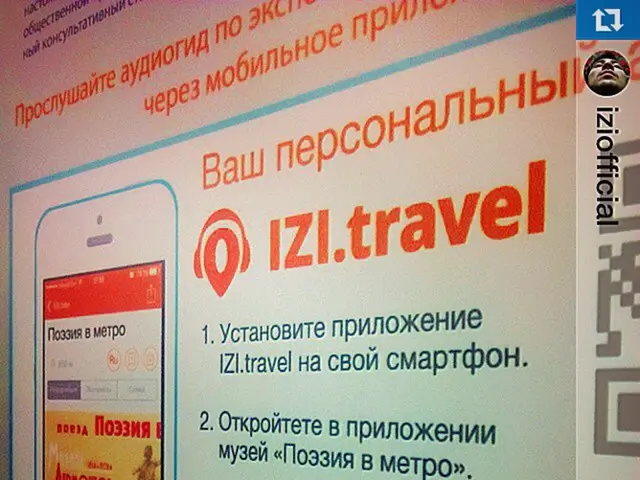Understanding Customer Lifetime Value (CLV) in Business
Business Strategy: Maximize Customer Retention for Long-term Success
Customer Lifetime Value (CLV) is a crucial metric for businesses seeking to determine the potential profitability of acquiring similar customers. This value helps companies make informed decisions about pricing, marketing, and customer acquisition strategies.
Best Practices for Calculating CLV
- Choose an Appropriate CLV Formula According to Your Business Model:
- Basic CLV Calculation: This formula is suitable for retail or subscription models with relatively stable purchasing patterns: [ \text{CLV} = (\text{Average Purchase Value} \times \text{Average Number of Purchases}) \times \text{Customer Lifespan} ]
- More Detailed Formula Including Profit Margin and Costs: This formula provides a more accurate financial picture, particularly for subscription or SaaS businesses: [ \text{CLV} = (\text{Average Value of Sale} \times \text{Number of Transactions} \times \text{Retention Time} \times \text{Profit Margin}) - \text{Customer Acquisition Cost} ]
- SaaS Specific Formula Using Churn Rate: This formula helps estimate revenue over the customer's expected subscription duration: [ \text{CLV} = \frac{\text{Average Monthly Revenue per User} \times \text{Gross Margin}}{\text{Monthly Churn Rate}} ]
- Cost-Emphasized Method: This method is useful for businesses with high customer-related costs: [ \text{CLV} = \text{Gross Revenue over Customer Lifespan} - \text{Acquisition Costs} - \text{Servicing Costs} ]
- Regularly Update Key Metrics:
Variables such as average purchase value, purchase frequency, customer lifespan, churn rate, and acquisition/service costs should be updated frequently to maintain accuracy.
- Segment Customers and Use Cohort Analysis:
Tracking CLV across customer segments enables identifying the most and least profitable groups. Running cohort analyses over time reveals retention trends and helps target customer success efforts effectively.
Best Practices for Applying CLV
- Enhance Customer Experience and Retention: Use insights from CLV to focus on improving the customer experience, simplifying ordering processes, and strengthening brand loyalty, as these factors drive repeat purchases and longer retention.
- Prioritize Marketing and Sales Investments: Allocate resources efficiently by focusing on segments with higher CLV, optimizing acquisition channels, and tailoring retention programs.
- Forecast Revenue and Plan Growth: Use CLV data to predict future revenue streams and to make informed decisions about product development, pricing, and customer support.
- Monitor Churn and Upsell Opportunities: Leverage cohort and segment CLV data to identify churn risks early, implement upsell or cross-sell campaigns, and improve customer lifetime profitability.
Summary
- Calculate CLV using formulas appropriate to your industry and business model, incorporating costs and margins for accuracy.
- Update metric inputs regularly to reflect changes in customer behavior.
- Segment customers for targeted strategies and deeper insights.
- Use CLV to guide marketing budgets, retention strategies, and revenue forecasting.
These practices ensure that CLV is not just a static metric but a dynamic tool that drives sustainable growth and customer-centric decision making. CLV is essential across departments, telling marketers how much they can afford to spend to win a customer, helping product teams understand usage behavior, and guiding finance teams in forecasting revenue.
Predictive CLV estimates future customer value using behavioral data, machine learning models, or forecasting techniques. There are two main ways to calculate CLV: Historic Customer Lifetime Value and Predictive Customer Lifetime Value. Understanding CLV gives a strategic advantage that drives informed growth and connects marketing, retention, and budgeting efforts to a single metric. CLV is a practical calculation applicable to various business models, including e-commerce, SaaS, retail, and online courses. CLV drives decisions around loyalty programs, pricing strategies, and onboarding experiences. CLV helps companies prioritize high-value customers, reduce churn, and make smarter acquisition decisions. CLV improves efficiency and prioritizes long-term profitability over short-term wins.
[1] ChurnZero [2] HubSpot [3] GrowthHackers [4] Shopify [5] Investopedia
- Understanding the importance of CLV in personal-finance matters, an individual might consider maintaining a record of their average purchase value, purchasing frequency, and customer lifespan to calculate their personal CLV and make informed decisions about their spending and savings strategies.
- A finance department in a business could use CLV when deciding on the budget for marketing initiatives by prioritizing investments on channels that attract customers with higher CLV, leading to a more profitable client base and efficient resource allocation.




